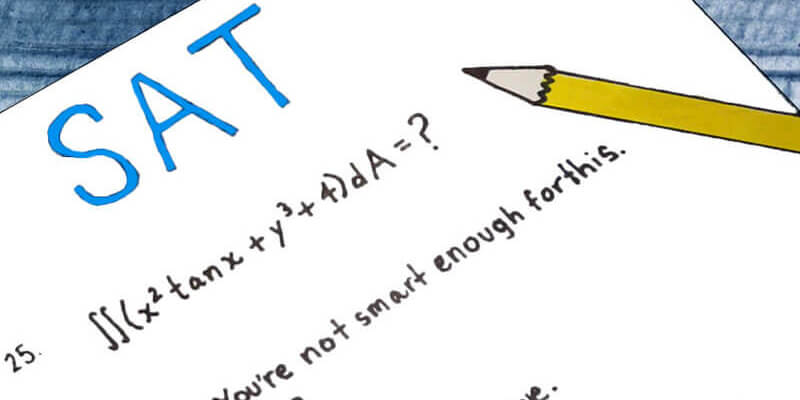My experience with the SAT: How I improved my score by 300+ points
March 24, 2022
If you are a high schooler considering applying to selective colleges, you are probably considering taking the SAT soon (if you haven’t already). While more universities are becoming test-optional, a high SAT score could certainly boost your overall impression on college admissions officers! As someone who has taken the SAT three times and has improved over 300 points from their first exam, here are some things I did to significantly increase my score that could help you too!
Reading
The Reading section was by far the hardest part of the test for me. In my first few practice tests, I found myself getting at least fifteen questions wrong even after learning from my mistakes. It’s key to remember that the questions are objective, not subjective. In fact, many of the questions are stated in the passage but just worded differently in the answer; for instance, if a question says “According to the passage” or “What is implied from the passage”, the answer is blatantly stated in the passage. What I like about the Reading section is that you rarely have to interpret the passage for symbolism or hidden meanings; most of it is already said in the passage.
Although my Princeton Review book said to never read the entire passage and to just skip to the corresponding questions, I find reading the entire passage first to be extremely helpful to fully understanding the questions. It’s only when I am running out of time on the section that I go straight to a passage’s questions. Time management is vital to doing well on this section; only 65 minutes to answer 52 questions doesn’t give you a lot of wiggle room to lose focus, unlike the other sections where you usually have a few minutes to check your answers.
The reading section is, sadly, often a toss-up; no matter how much practice you do, if the passages you receive on the actual test are extremely difficult, your score could widely vary from your score on practice tests.
Writing
The writing section was a lot easier for me to improve on because every time I practiced, I improved by the next test. I knew what my writing weaknesses were: questions dealing with sentence placement, finding the main idea of an excerpt, and transition words. Learning comma rules, idioms/diction, and other grammar rules helped me the most. It is important to go through your mistakes, find patterns in your scores, and identify what you need to work on most.
Math
The math section can be an excellent score booster if you become “good” at SAT-math-style questions. I went from a 620 on my first practice test to an 800 on many of my most recent practice tests. Another key thing is that the math section questions are simple, making it easy to rush through them with ease, but they also provide ample opportunities to make careless mistakes. To me, the math section is like a room full of booby traps; if you make a few minuscule mistakes, you could get ten easy questions wrong.
For math, I also prioritized my weaknesses; like many other test takers, I struggled especially with the geometry and trigonometry problems. However, as I did more practice problems and truly understood the concepts, I was able to solve those kinds of problems on tests.
General Advice
From personal experience, if you’re looking to score a 1400+ on the SATs, prep books like Princeton Review, Kaplan, or Barron’s are not as helpful as they claim to be. First and foremost, these companies are not endorsed by the College Board (the organization that produces SAT tests), so the way in which they word their practice test questions are very different from how College Board does so. These books word the questions in an overcomplicated way and thus are not the best representation of the actual SAT. I also did not end up using any of the test-taking strategies they offered because they actually made it harder for me to complete practice tests. Nine weeks before the day of the SAT, I would take a practice test each weekend to see if I was making progress by using official College Board tests (link: https://satsuite.collegeboard.org/sat/practice-preparation/practice-tests).
The most important tip I have is to have a Google Doc or notebook to make corrections for every single question you get wrong on a practice test—write out why you got it wrong, what makes the answer choices wrong, and what makes the right answer right. Does it take about an hour to do? Perhaps, but I’ll tell you what my older sister told me as I was huddled in the fetal position stressing over SAT prep at 1 AM last summer: “You’re never going to improve if you don’t write out exactly what you did wrong.” I took these words to heart and although corrections were a tedious process, they really did help me in the long run.
In general, there is no clear-cut path on how to score high on the SATs and different strategies will work for different people. I was able to improve my score by more than 300 points by doing prep for about 30 minutes to 1 hour a day. Although it’s a difficult journey, trust me, you’ll make it there.



Sana Shahid • Dec 14, 2023 at 3:44 am
Great advice. Thanks!